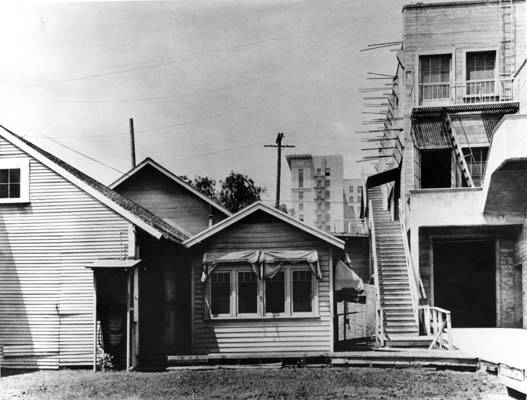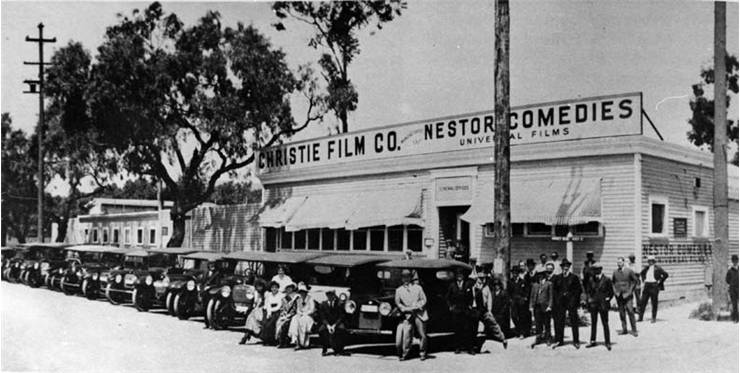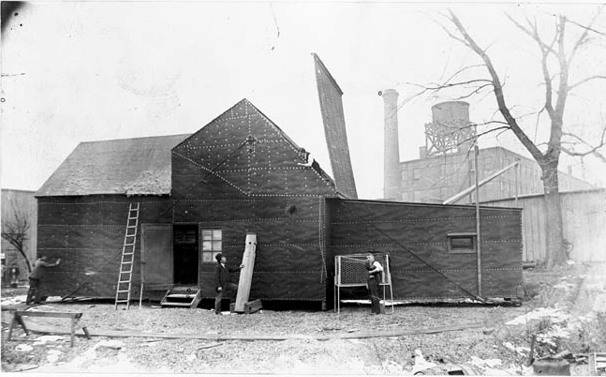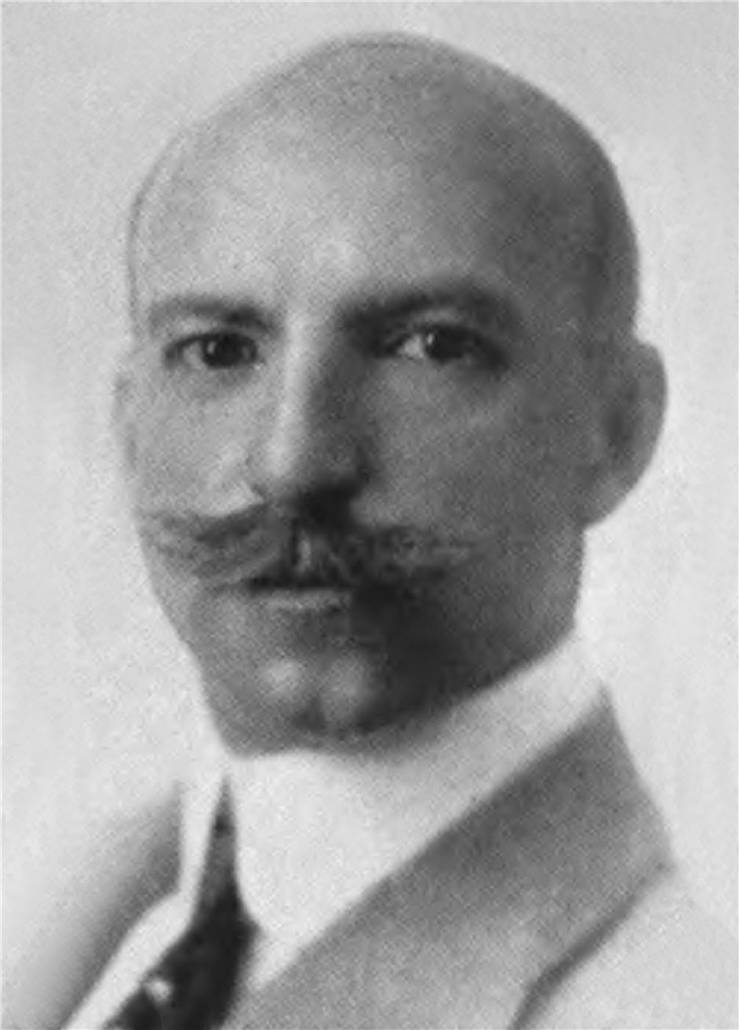First Film Studio and Filming Location
Creating films in organized “Studio” production facilities is a tradition that reaches the first years of film. Seeing the benefits of centralized film creation, with all necessary facilities, crew, and services present in one spot, film studios began appearing worldwide, enabling the creation of countless films that entertained people more and more with each passing year.
The first film studio was created by Thomas Edison in 1893. Consisting of one simple room and rudimentary camera equipment, Edison created many films there and sold them to nearby traveling theaters, museums, penny arcades, and fairgrounds. The first real studio was founded in 1909 by theatrical impresario Edwin Thanhouser in New York, with a film output of 1086 movies between 1910 and 1917. However, it was not easy to film movies in NY. Electricity was weak for powerful filming lights, and the sun was often covered with clouds and bad weather. Because of this (and Tomas Edison’s filming tax that everybody had to pay), filmmakers started moving their businesses to California.
The first studio in Hollywood was Nestor Studios, which opened in 1911. Another 15 studios came to Los Angeles in the same year and started creating films. Quickly, the business practices of a few individuals managed to create a clear structure for Hollywood studios. Rich “Big 5” studios controlled the majority of film production in the United States, with all of them controlling every step of film production and owning their theaters where they could fully control prices and marketing. Those Big 5 studios were Paramount Pictures, RKO Pictures, MGM, 20th Century Fox, and Warner Bros. (which became famous after they produced the first “talkie” film, The Jazz Singer, in 1927). Other famous studios in Hollywood were “The Little 3” - Universal Pictures, Columbia Pictures, and United Artists. Several small studios also worked in that early period of the film, but they were eventually purchased or stopped doing business (Republic Pictures, Monogram Pictures, and others).
Today’s landscape of films studio market share in the United States is as follows (2012 data):
- 17 % Columbia Pictures (owned by Sony)
- 15.4% Warner Bros. Pictures (owned by Time Warner)
- 14.3% Walt Disney Pictures (owned by The Walt Disney Company)
- 13.6% Universal Pictures (owned by Comcast and NBC Universal)
- 10.6% 20th Century Fox (owned by 21st Century Fox)
- 8.5% Owned by Paramount Pictures
Famous filming locations can be found worldwide, with studios taking advantage of infrastructures built around those locations and the local population earning money from constantly present film crews. Here are some of the most famous filming locations from all around the world:
- Wilmington, N.C. – Often called “Hollywood East,” it hosted over 300 movies and TV shows.
- Woodstock, Ill. – Gorgeous US town of 25,000 that hosted many films over the last few decades, including "Groundhog Day."
- Vancouver, British Columbia – Often called “Hollywood North.”
- Hatfield House – 17th-century royal house from England that was used for many films, such as Tim Burton Batman movies, Lara Croft, Batman Begins, Highlander, V for Vendetta, Shakespeare in Love, and many others.
- The Bradbury Building, Los Angeles – used by many films and TV shows. Most famously, it was depicted in a dark vision of the future in Ridley Scott’s Blade Runner. It was also used in (500) Days of Summer, The Artist, Lethal Weapon 4, Chinatown, Wolf, and Quantum Leap.
- Greystone Mansion, Beverly Hills – Used in more than 100 Hollywood films and TV shows - The Big Lebowski, There Will Be Blood, Sam Raimi's Spider-Man movies, X-Men, The Social Network, The Prestige, Ghostbusters II, etc.
- Monument Valley – Awesome desert formations in Arizona and Utah have been used in countless Hollywood projects, from old western to modern hits. It was popularized in John Wayne films Stagecoach and The Searchers, and was used frequently in the last few decades in Back to the Future Part III, 2001: A Space Odyssey, Forrest Gump, Mission: Impossible II, Lone Ranger, …



